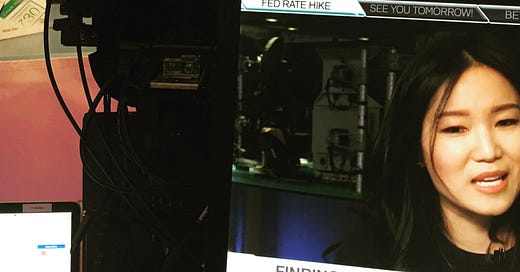How to get quality, unbiased, low-cost news
My top picks to stay informed without breaking your budget
Recently I came across this opinion headline in the New York Times (for which I pay a digital subscription): “It's Not a Good Sign When People Who Don’t Pay for News Have So Little to Choose From.”
If you can’t access it, I’ll summarize.
The author provides a history of how our modern news industry was born, and laments how society suffers when there are few remaining credible news outlets to choose from:
“It bodes ill for our democracy that those who cannot pay — or choose not to — are left with whatever our broken information ecosystem manages to serve up, a crazy quilt that includes television news of diminishing ambition, social media, aggregation sites, partisan news and talk radio. Yes, a few ambitious nonprofit journalism outlets and quality digital news organizations remain, but they are hanging on by their fingernails.”
How today’s news outlets make money
Citing the article, back in the day rich people paid roughly the amount of six cents (or $2 today) to read a daily newspaper, then considered a luxury good.
But then the innovative Benjamin Day priced his newspaper at one cent, instead making money from advertisers who bought space in the newspaper.
That’s mostly how journalistic outlets are still funded today, in addition to monies from subscribers and local or domestic budgets.
Technology has also enabled the fast sharing or repurposing of branded news across different entities — a process known as aggregation.
Think one email digest of news from The New York Times, the Wall Street Journal, CNN, Fox, and others. The result is many institutions are cutting staff, operations, or shuttering altogether, along with the possibilities of original storytelling and ideas.
From my experience in broadcast newsrooms, I can say between trolling the headlines, it takes endless pitching from creative people to move original ideas forward.
But here we are, so where do people turn if they don't want to shell out an arm and a leg for news — if they're reading news at all?
I once heard a productivity expert say he didn’t read the news because doing so is time consuming and distracting. Anything important would eventually make its way to his ears from friends and family members. Politics and sports were distractions.
I’ve been guilty of being this aloof, but I do still enjoy staying current, especially since I have more free time nowadays.
Unfortunately, the process of aggregation is going to be an ongoing trend.
You might suspect that free news couldn't possibly be quality. Or unbiased.
To counter this, you simply have to read more for more insightful perspectives.
In “The Art of Thinking Clearly,” Rolf Dobelli encourages readers to always question any info source.
That said, there are state-funded news providers offer refreshing global perspectives outside of your local television, CNN, or Fox or any networks that require a cable or streaming subscription.
Here’s where I get my news from both free and paid sources.
Here are the best free or low-cost global news sources
Free digital news
BBC: The “beeb” as Brits call it, provides milquetoast, straightforward news, which is sometimes all you need if want to stay current
Al Jazeera: An independent news entity which presents a welcome global perspective to the world’s current events
Reuters: Global news covering a wide range of topics, including politics, business, technology, and entertainment
Associated Press (AP): A non-profit news agency that is not only a source for global news outlets, but also offers access to a broad range of news content
Free daily news in your inbox
1440: I subscribe to a daily newsletter called 1440 (not getting paid to mention it).
Every morning, I receive an email that aggregates news from all sorts of sources.
There’s no political leaning, and it covers the gamut of global current events, science and technology, business, sports, and entertainment.
And, there is usually only one sponsor in the content. I like that it’s a consistent newsletter with no agenda. You can take a peek or subscribe here.
Paid news subscriptions
Apple News+: If you’re an iOS user, then paying for Apple News+ is the best bang for your buck because you can access an expansive library of magazines, city newspapers like the Los Angeles Times and The Miami Herald, and even some stories from the Wall Street Journal, the NYT, and other paywalled news outlets.
Cost: $9.99 monthlyFinancial Times: I looooove my FT. From the days of receiving the salmon-colored physical newspaper at my doorstep, I am a loyal subscriber not just for its financial news coverage but also for the weekend “HTSI” (How to Spend it)
Cost: Starting at $40 monthlyNew York Times: The tried and true newspaper for New Yorkers around the world — while there may be leftist lean, it’s still worth my time. I’ve found their interactive stories to be quite solid pieces of investigative work, like this one on the Surfside, Fl condo collapse
Cost: Starting at $1 weekly (intro rate)The Guardian: Another British news source which covers a wide variety of topics including U.S. political coverage
Cost: Support with as little as $1
(Pretty much free) TV news
One of the cheapest ways to stay in touch with domestic or international news is with the use of a digital satellite (you can get one here for around $10 on Amazon).
Hook it up to your TV’s antenna output and access all your local and major evening primetime news programs on CBS, NBC, and ABC.
Outside of that, you’ll have to pay for cable news media channels like CNN, Fox, CNBC, Bloomberg, and so on.
***
Until next time,
Shindy
On Instagram + TikTok
***
Did you enjoy this newsletter? Like it by clicking on the heart at the very top or bottom of this post, or share it with you someone you think would find value in it.







